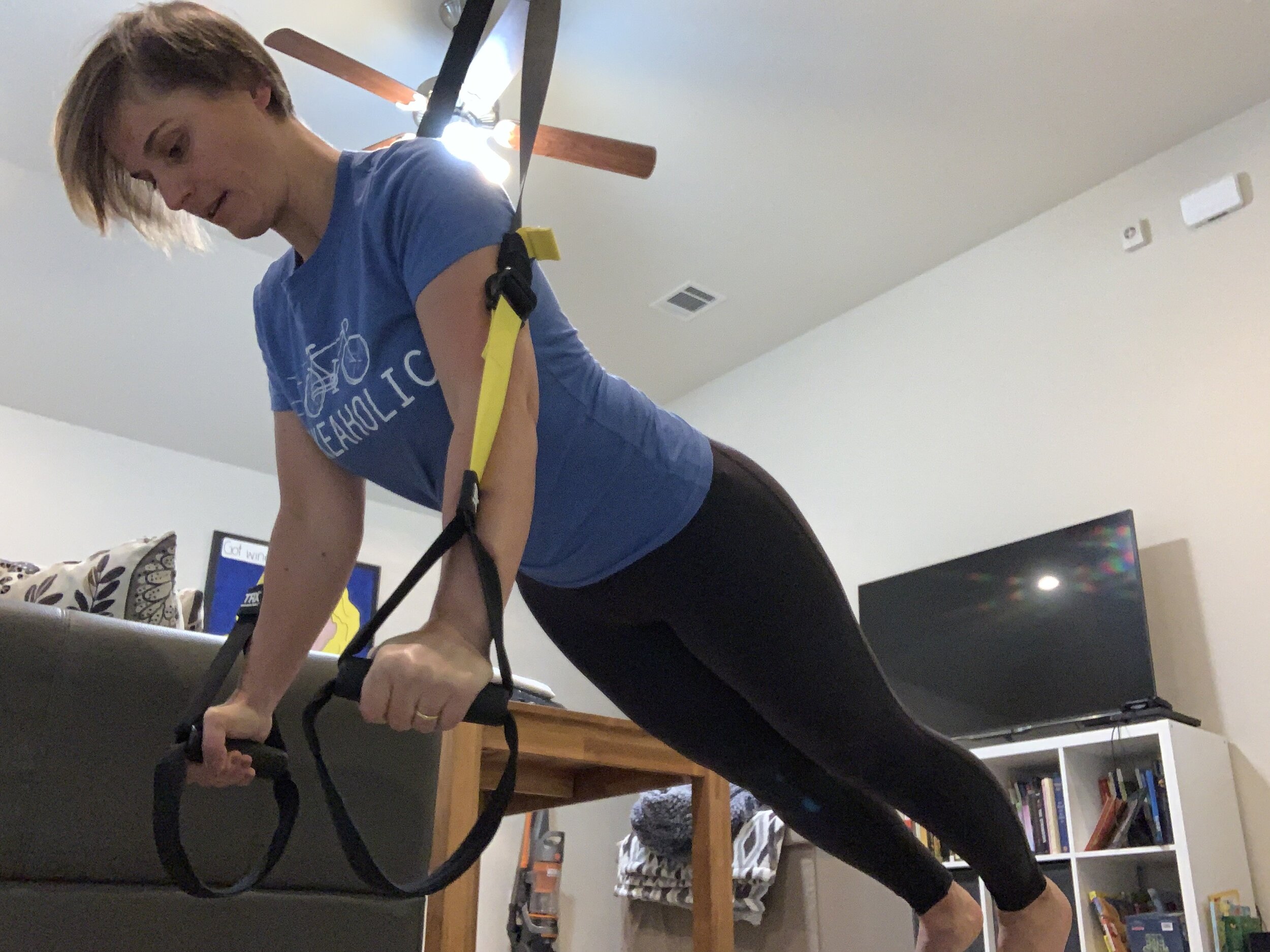TRX challange your core.
The gym is closed, and you have no access to dumbbells, kettlebells, or weight-training machines. It's time to add something new to your fitness routine: TRX training techniques, one my my favorite workout equipment.
What the heck is TRX? Invented by a former U.S. Navy SEAL, the TRX (short for total-body resistance exercise) turns every exercise into a challenge for your core by using two simple resources: gravity and your body weight. All you have to do is anchor the TRX straps to a secure spot — a door frame. Depending on the exercise, you'll use your feet or hands to hold onto the straps. Suspension training can help you not only gain strength but also increase your stability while developing better neuromuscular coordination.
Even better? The straps roll up into practically nothing, so it's a take-anywhere, do-anywhere workout — provided you have somewhere stable to serve as your base. Here are my top four exercises that I am regularly adding to my core strength training.
TRX Push-Up
This movement increases both strength and stability in the upper body and core. It helps give better support and control of your body in unstable positions on the bike (sudden swerves, unexpected potholes, etc.). It also increases power transfer from the upper body to the legs during hard and/or out-of-the-saddle efforts. If you're a triathlete, the TRX Push-Up can add strength to your swim stroke as well as upper torso run mechanics and overall posture.
Targeted Area: Chest and Shoulders
Tips and Progressions
To make this harder, slide back to load more of your body weight onto the straps. To make it easier, step forward to support more of your body weight with your feet. You can also progress to suspending your feet instead of your hands.
TRX Row
This is another great all-around movement that targets opposing muscle groups to the pushup. It can improve posture both on and off the bike, and strengthen the large muscles in your back. As an added bonus, this exercise can add power to your swim stroke.
Targeted Area: Back and Arms
To make it harder, step forward, and place your feet further underneath the anchor. You will end up leaning back further as well, putting more bodyweight on the straps, which means you will lift more weight.
TRX Lat Pull-Down With Squat
The lat pull-down is a great all-around exercise that targets the latissimus dorsi (muscles in the back) and has a beneficial effect on the 'pulling' phase of the four competitive swim strokes. The latissimus dorsi is responsible for a strong stroke, and the forceful rotation that propels your stroke forward. Strong lats will not only increase swim speed and power, but will also enable you to improve your swimming endurance. Hold onto the TRX and draw your feet a little bit wider than shoulder-width apart with your toes and knees turned out. Drop into a deep squat, keep your back straight, and straighten out your arms. As you draw your body upwards, drive through the heels, and engage your lats and biceps as you draw your elbows down to the base of your ribcage.
Targeted Area: Lats and Triceps
TRX Hamstring Curls
The hamstrings are extremely important for running. They need to be strong and flexible. When people log a lot of miles, quadriceps tend to become powerful and dominant. As a result, many peoples' hamstrings become really tight, putting them at a greater risk of injuries such as muscle tears, strains and pulls. Therefore, it's really important to spend some time and energy strengthening the hamstrings with eccentric exercises. Sit on the ground and place both heels into the TRX straps. Lie on your back and keep your legs straight while they're suspended in the air. Keep your upper body and head relaxed on the ground as you draw your hips upward. Keep your glutes and hamstrings tight and engage your hip flexors. Keep your hips and butt elevated as you draw both knees into your chest.
Targeted Area: Hamstrings and Glutes
Repeat the motions until you reach muscle fatigue. It's best to start with 10 to 20 reps for about 2 to 3 sets.
I have been coaching a number of triathletes and runners who, due to work commitments, have to travel extensively and find it hard to get to the gym consistently to follow their running or triathlon-specific strength training, and I often suggest that they invest in the TRX Training System, allowing them to complete their strength and functional core workouts wherever they're staying.
Happy training, and I hope we can all get back to our regular gym routines in the not-so-distant future!

